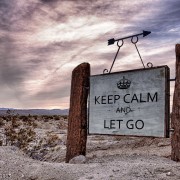A Strengths-Based Culture Drives Performance
Why are sports analogies commonly found in business? Because nurturing talent in sports is all about finding out what someone is good at and then making them really great at it–strengths-based culture. Coaches rarely focus their effort on developing the weakest part of an athlete’s game or ability. They will always find their best attributes and strengths and apply those–hence the term positional player.
Too often in business we place an individual in a position, give them performance reviews and identify the areas they need to improve on. Then we spend time and money working to improve the individual’s weaknesses while spending no time developing their strengths or placing them in positions that utilize their strengths to the fullest extent possible.
A strengths-based culture is developed by focusing on aligning strengths with requirements. To do this, a company’s talent management strategy must focus on hiring based on strengths, developing those strengths and applying those strengths appropriately. You must also adopt the tools and resources necessary to identify and evaluate those strengths.
Strengths-based Hiring
The interviewing process needs to be swift, targeted and effective in the limited time you have available. This doesn’t mean sacrificing quality, rather it means being intentional and focused on what you are trying to achieve. The intent of most hiring managers in an interview is to identify if someone is qualified for the position. Qualifications are also considered abilities. So ultimately you want to understand their abilities.
What you don’t want to achieve is a list of all the things a candidate is not good at. Interviews that focus on weaknesses will almost always lead the hiring manager to find reasons not to hire someone. Instead, focus the interview on strengths and then identify how those strengths fit the requirements of the position, or another position. Look for the reasons to hire somebody.
A good method to conduct a strengths-based hiring program is to have a few layers to the process. First, interview for strengths that fit the organization as a whole. Don’t get blinded by the exact requirements of the position they are interviewing for. Second, interview for strengths as they relate to the position. Even then, stay focused on the critical few required for success in the position.
Develop Strengths and Forget about Weaknesses
Don’t fall into the trap, and don’t let your employees fall into the trap, of strictly focusing on improving and developing their weaknesses. Be aware of weaknesses and avoid situations that highlight them. Instead, be keenly tuned in to strengths and actively seek to apply them in various situations.
In, “Strengths Based Leadership,” by Gallup authors Tom Rath and Barry Conchie explain their research that demonstrates effective leaders know their own strengths and invest in the strengths of others. The point being, you can get much further aligning strengths with objectives than you can developing someone’s weaknesses.
Have you ever been in a relationship where you focused on the other person’s faults and forgot about their features? Worse yet, you thought you’d be able to change them. How well did that work out? Investing in strengths is no different.
Develop Roles and Teams Based on Strengths
Your typical job description usually consists of all the things an employee is required to do — known as essential functions. There’s usually some ceremonial skills, education and soft requirements thrown in there, but usually without much thought.
Approach job descriptions from the “one-thirds / two-thirds” perspective. One-third of the job description should be the core essential functions only. The other two-thirds should consist of how success will be measured and the competencies and strengths required to be successful in the position. Evaluate employees and potential employees against these for strength-based placement.
How to Choose an Assessment
There are hundreds of assessments out there to chose from. They range anywhere from full day interactive processes that cost a few thousand dollars to 15 minute survey based assessments that can cost less than $100. After determining your budget and needs, you can begin the hunt for an assessment.
Choose an assessment that allows an employee to self learn such as the Strengthsfinder 2.0. ExactHire offers an array of assessments available to achieve the right job fit. If you’re making an organization wide push for a strength based culture, utilizing assessments associated with books allows everyone to receive the same information and be speaking the same language. Additionally, these well established assessments typically come with training and development tools.
The downside to online only assessments is that they rarely provide an interactive learning process. A summary will be provided to the respondent, but that is usually it and leaves the employee guessing what the results were. You want to be able to sit down with an employee and be transparent about the results. Highlight their strengths and establish a collaborative plan to apply and develop those strengths.
Things to Remember When Using Assessments
Assessments are a tool in the toolbox. This is very important to remember. You should never use an assessment as the ultimate decision factor in hiring or placement. Think of the decision as a three-legged stool. You need all three legs for the stool to stand. The assessment is only one of the legs. The other two legs consist of the person’s experience (what they’ve actually accomplished) and their competencies or abilities (what they can actually do). You must bring these three things together and evaluate them against the environment in which the employee will be performing.
Make sure the assessment is applicable to what you are trying to evaluate and achieve. Also, keep the assessment consistent across the organization. Using different brands of assessments for different individuals can be problematic. However, you may need to identify different assessments for different levels within the company, such as leadership assessments for leaders.
If you are able to align your core talent management practices of hiring, training and development, and placement with individual and team strengths you will see much better overall performance. Additionally, employees’ motivation and satisfaction will increase as they will succeed more often, be more engaged in their roles and satisfied with the work they are doing.
Photo Credit: www.historicalstockphotos.com










